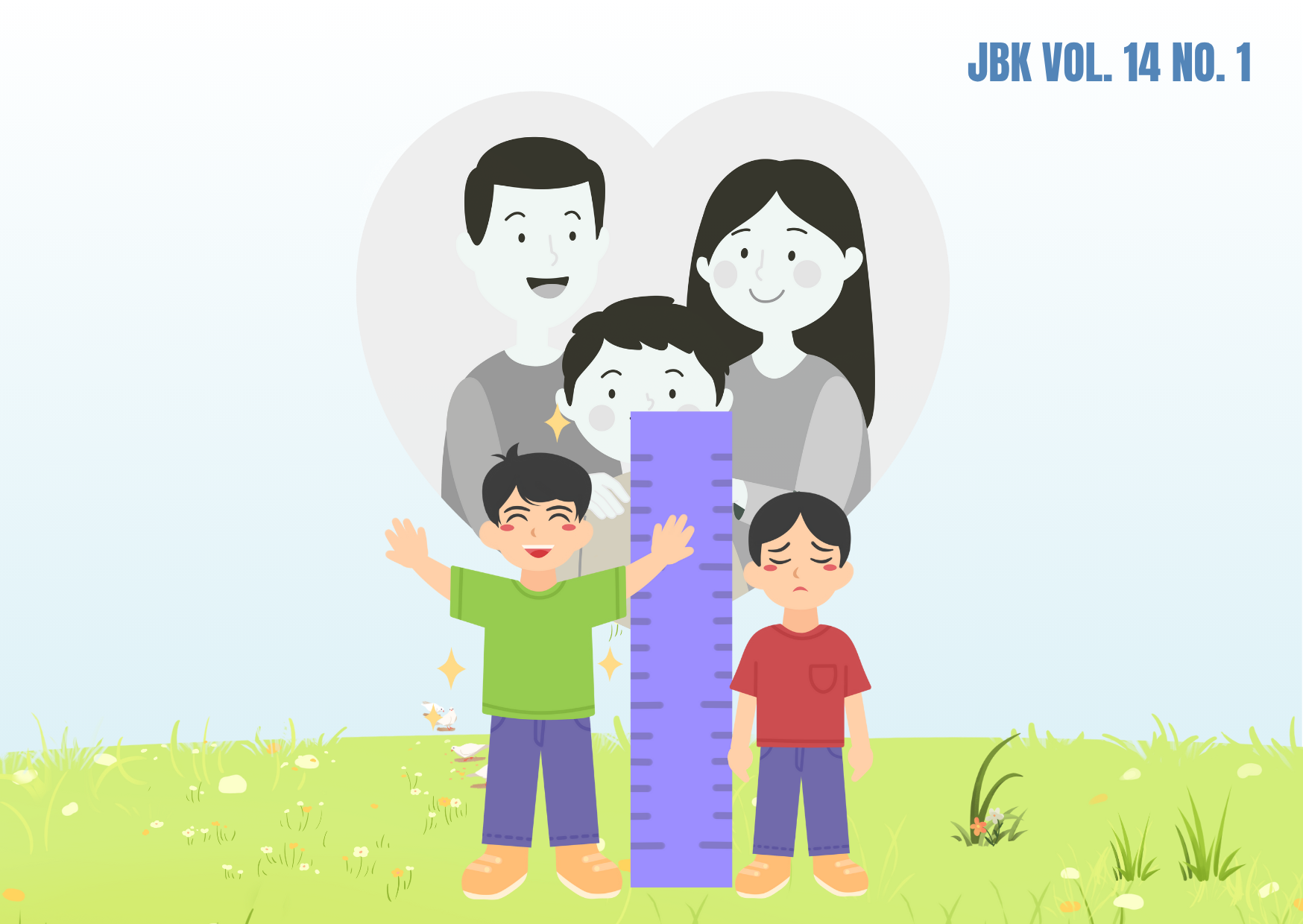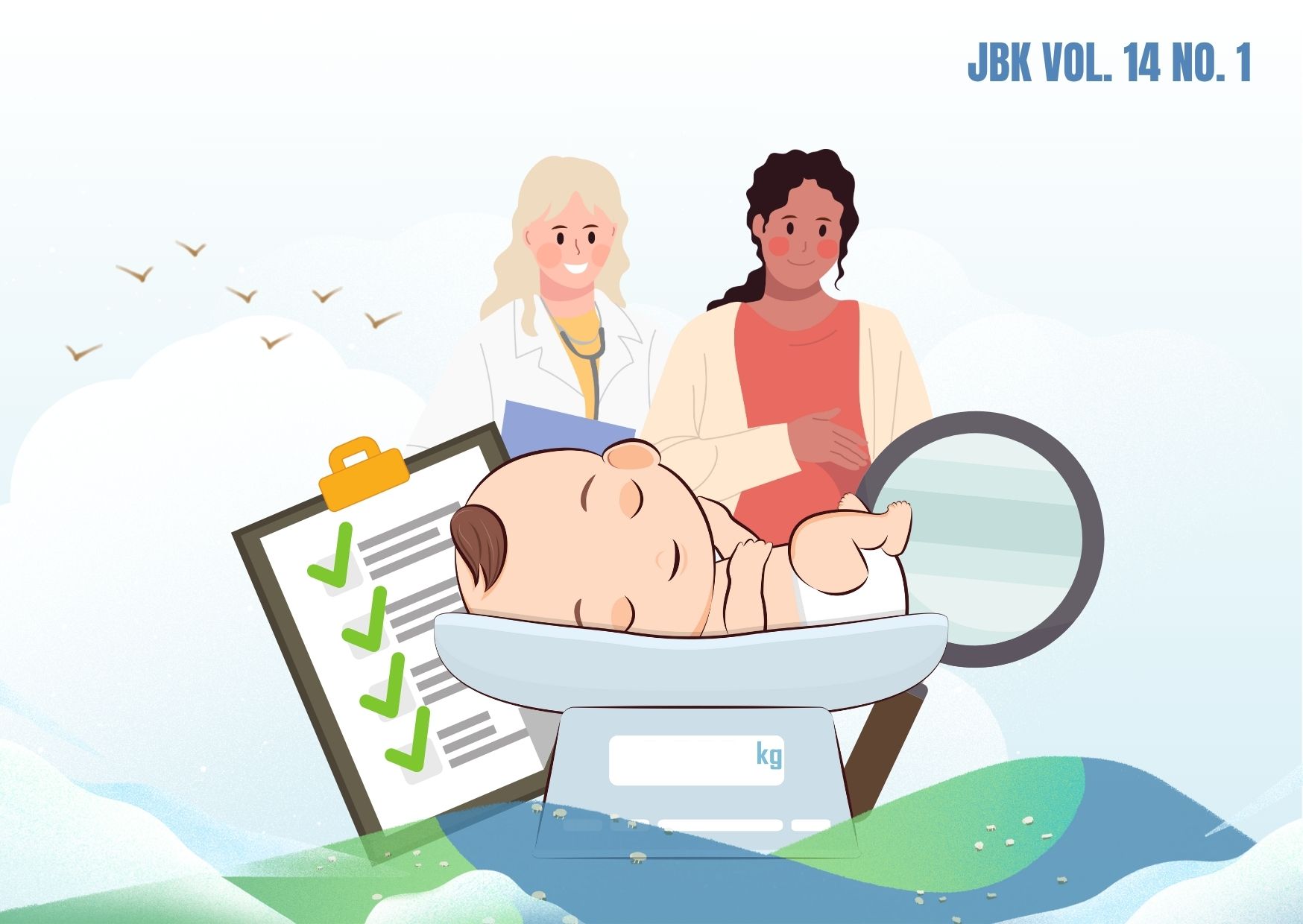RELATIONSHIP OF DEMOGRAPHY, SOCIO-ECONOMY, AND HUSBAND'S SUPPORT WITH THE USE OF MEDICAL OPERATIVE FOR WOMEN CONTRACEPTIVES (TUBECTOMY) TOWARDS COUPLE OF CHILDBEARING AGE IN PUSKESMAS MOJO SURABAYA
Downloads
The family planning program has a very appropriate role in addressing population growth. Most family planning participants chose injections and pills, while medical operative for women contraceptives (tubectomy) and medical operative for men (vasectomy) are the least preferrable. Based on National Board of Population and Family Planning data 2017, the majority of new family planning participants in Indonesia are dominated by family planning participants who use non-long-term contraception methods by 79.48% of all new family planning participants. The use of long-term contraceptive methods from year to year has increased compared to non-long-term contraceptive methods, but there is more interest in acceptors to use non-long-term contraceptive methods. The research objective is to examine the relationship between demographics, socio-economics, husband's support, and the use of medical operative for women contraceptives device (tubectomy). The research type is inferential research with cross-sectional design. The sample in this study was 40 EFAs, of which 20 EFAs used medical operative for women contraceptives (tubectomy), and 20 couples of childbearing age used non-medical operative for women contraceptives (tubectomy). The study results showed that the level of education, age, income, and husbands' motivation are not related to the use of medical operative for women contraceptives (tubectomy). However, the number of children is related to the use of medical operative for women contraceptives (tubectomy). The researcher's suggestion is to conduct education-related for pregnancy management so that the people can estimate the number of children, the distance of pregnancy, and the risk of pregnancy.
Adiputra, R., Nugroho, D., Winarni, S. and Dharminto, 2016. Hubungan Beberapa Faktor pada Wanita PUS dengan Keikutsertaan KB Suntik di Desa Duren Kecamatan Sumowono Kabupaten Semarang. Jurnal Kesehatan Masyarakat, 4(3), pp.18–25.
Andini, I.C., 2017. Hubungan Dukungan Suami dengan Pemilihan Kontrasepsi IUD di Puskesmas Tempel 1 Sleman Yogyakarta. Universitas 'Aisyiyah Yogyakarta.
Arliana, W.O.D., Sarake, M. and Seweng, A., 2013. Faktor yang Berhubungan dengan Penggunaan Metode Kontrasepsi Hormonal pada Akseptor KB di Keurahan Pasarwojo Kecamatan Pasarwojo Kabupaten Buton Sulawesi Tenggara. Universitas Hasanudin.
Aryati, S., Sukamdi and Widyastuti, D., 2019. Indikator-Indikator yang dapat Memotivasi Pemakaian Metode Kontrasepsi (Permasalahan di Wilayah Seberang Kota Palembang). Majalah Geografi Indonesia, 33(1), pp.79–85.
Grestasari, L.E., 2014. Hubungan antara Tingkat Pendidikan, Pengetahuan, dan Usia Ibu PUS dengan Pemilihan Jenis Kontrasepsi di Desa Jetak Kecamatan Sidoharjo Kabupaten Sragen. Universitas Muhammadiyah Surakarta.
Hidayah, N. and Lubis, N., 2019. Hubungan Pengetahuan dan Dukungan Suami terhadap Pemilihan Kontrasepsi Tubektomi. Jurnal Endurance : Kajian Ilmiah Problema Kesehatan, 4(2), pp.421–428.
Irawati, D., 2017. Faktor-Faktor yang Mengajak Menggunakan Kontrasepsi IUD (Intra Uterine Device) di Desa Karangjeruk Jatirejo Mojokerto. Medica Majapahit, 9(2), pp.126–141.
Indonesian Ministry of Health, 2016. Buku Kesehatan Ibu dan Anak. Jakarta: Indonesian Ministry of Health.
Lismawati, 2018. Hubungan Pendidikan, Sikap PUS dan Motivasi Suami terhadap Pemakaian Alkon IUD pada Tahun 2017 di Wilayah Kerja Puskesmas Yaman Kota Jambi. Sientia Journal Universitas Adiwangsa Jambi, 7(1), pp.58–64.
Mariati, T., 2018. Pemilihan Pengunaan Kontrasepsi terhadap Dukungan Suami (IUD). Manajemen Kesehatan Yayasan RS. Dr. Soetomo, 4(2), pp.89–109.
Mularsih, S., Munawaroh, L. and Elliana, D., 2018. Hubungan Pengetahuan dan Dukungan Suami dengan Pemilihan Alat Kontrasepsi dalam Rahim (AKDR) pada Pasangan Usia Subur (PUS) di Kelurahan Purwoyoso Kecamatan Ngaliyan Kota Semarang. Jurnal Kebidanan, 7(2), pp.144–154.
Mulyana, 2019. Pemberdayaan Perempuan Melalui Program Keluarga Berencana. Prosiding KS: Riset dan PKM, 4(1), pp.1–140.
National Board of Population and Family Planning, 2017. Survei Demografi dan Kesehatan Indonesia. Jakarta: National Board of Population and Family Planning.
Pinamangun, W., Kundre, R. and Bataha, Y., 2018. Hubungan Dukungan Suami dengan Pemilihan Jenis Kontrasepsi Intra Uterine Device pada Wanita Usia Subur di Puskesmas Makalehi Kecamatan Siau Barat. e-Joournal Keperawatan, 6(2), pp.1–7.
Rahayu, I., Nugroho, R.D. and Winarni, S., 2013. Hubungan Beberapa Karakteristik Wanita Pasangan Usia Subur (PUS) Pesera KB Aktif dengan Pemilihan Metode Kontrasepsi Suntik di Kelurahan Kramas Kecamatan Tembalang Triwulan I Tahun 2013. Jurnal Kesehatan Masyarakat Universitas DIponegoro, pp.1–8.
Rizkitama, A.A., 2017. Beberapa Faktor yang Berhubungan dengan Partisipasi Wanita dalam Pemilihan Tubejtomi pada Peserta MJKP di Kecamatan Bumiayu Kabupaten Brebes. Universitas Diponegoro.
Sari, T.W. and Yulnefia, 2019. Penggunaan KB dalam Rahim Berhubungan dengan Faktor Demografi pada Wanita Usia Subur di Puskesmas Payung Sekaki Kota Pekanbaru. Collaborative Medical Journal, 2(1).
Setiawati, R., Yanti, I. and Pasaribu, I.H., 2019. Hubungan Usia Paritas, pendidikan, Sumber Informasi dan Persepsi terhadap Kemauan Wanita Usia Subur Memakai Metode Kontrasepsi Jangka Panjang. Jurnal Singaerbangsa Karawang, 4(1), pp.94–102.
Surabaya City Health Office, 2017. Profil Dinas Kesehatan Kota Surabaya. Surabaya: Surabaya City Health Office.
Copyright©2022 Jurnal Biometrika dan Kependudukan (Journal of Biometrics and Population)
This work is licensed under a Creative Commons Attribution-NonCommercial-ShareAlike 4.0 International License.
1. Copyright of all journal manuscripts is held by the Jurnal Biometrika dan Kependudukan.
2. Formal legal provisions to access digital articles of the electronic journals are subject to the provision of the Creative Commons Attribution-ShareAlike license (CC BY-NC-SA), which means that Jurnal Kesehatan Biometrika dan Kependudukan to keep, transfer media/format, manage in the form of databases, maintain, and publish articles.
3. Published manuscripts both printed and electronic are open access for educational, research, and library purposes. Additionally, the editorial board is not responsible for any violations of copyright law.



































